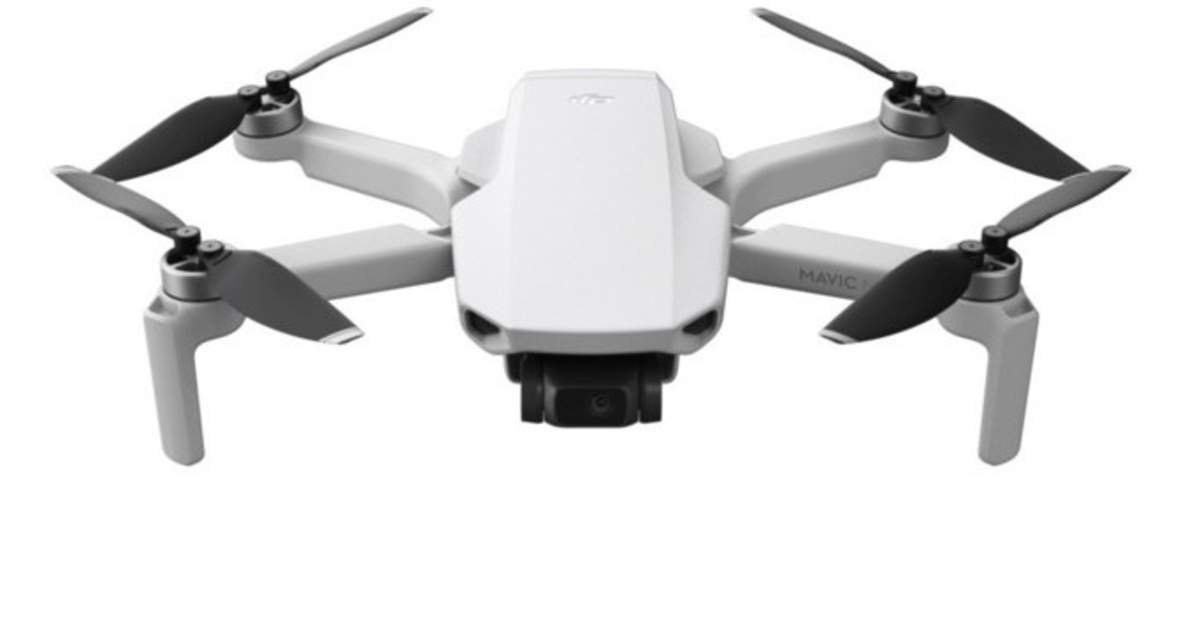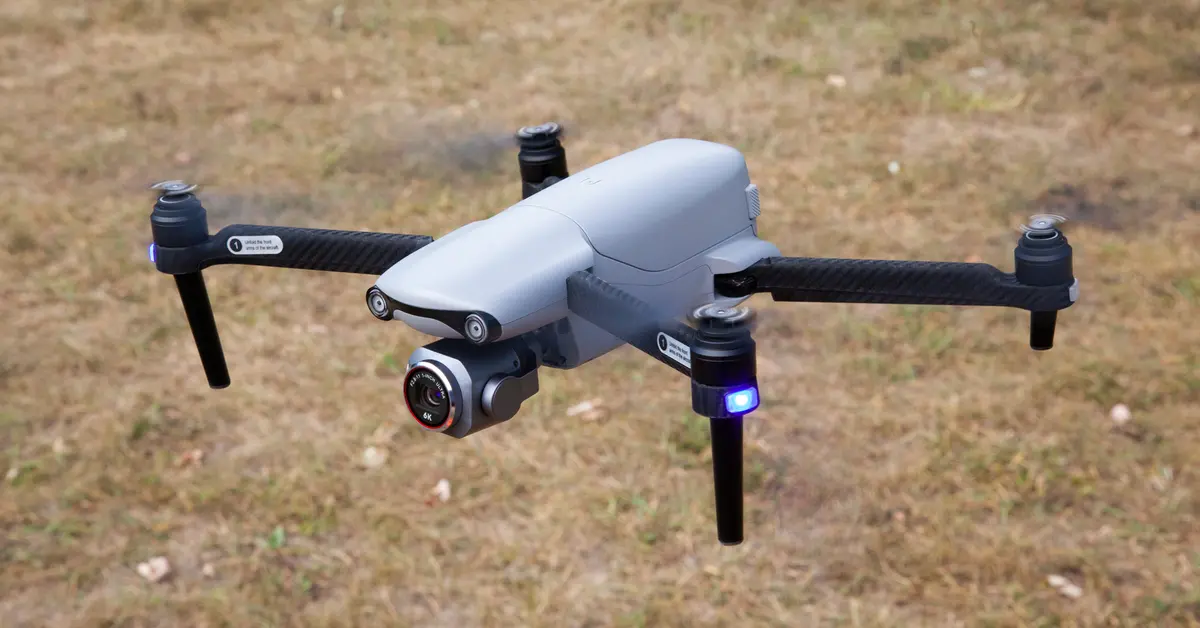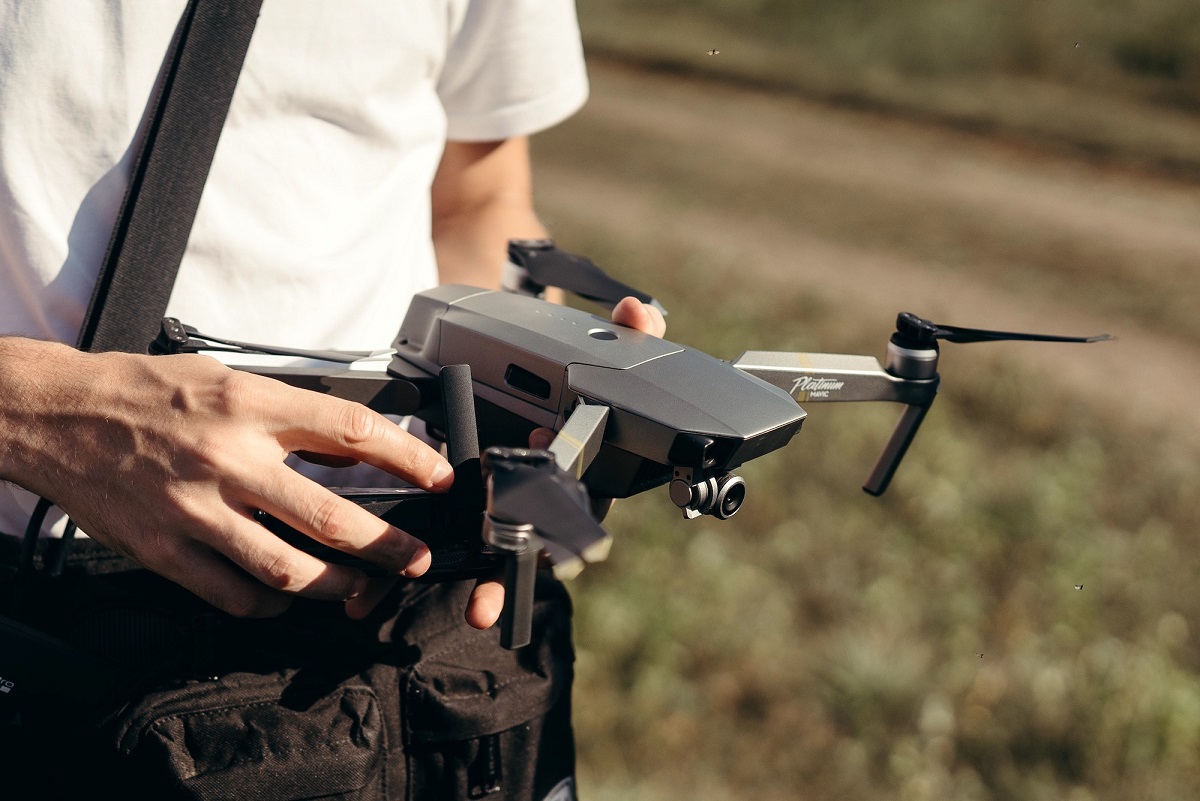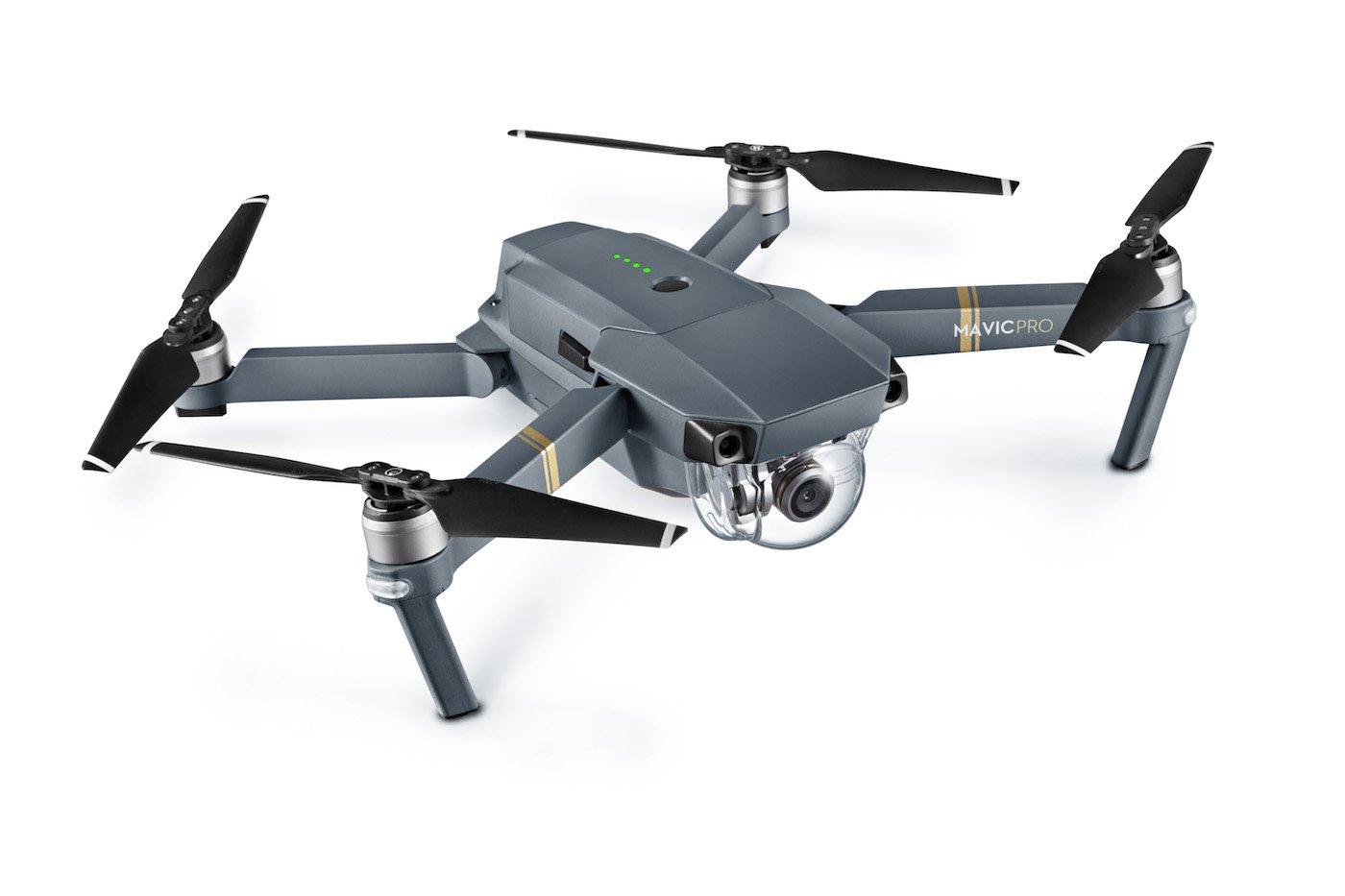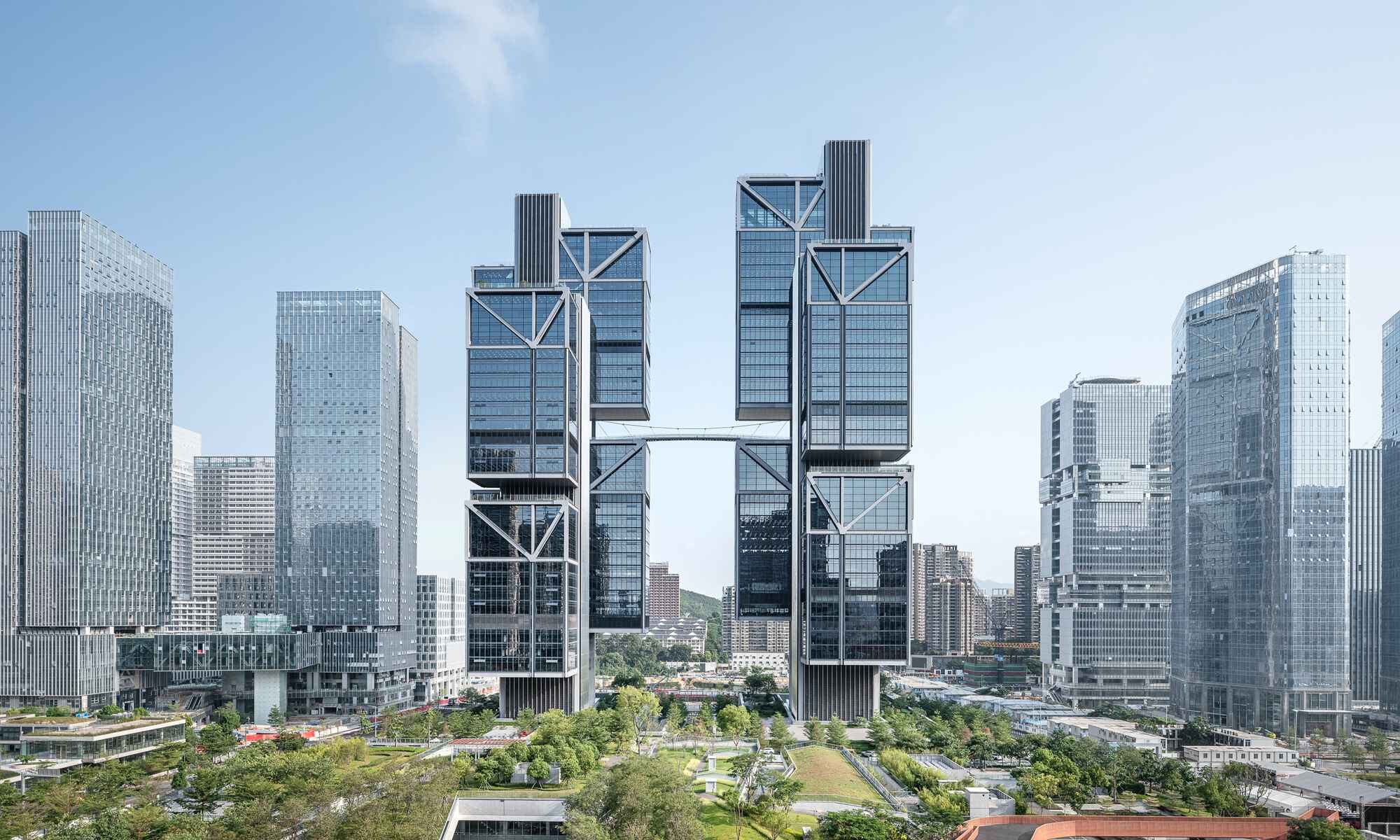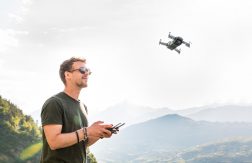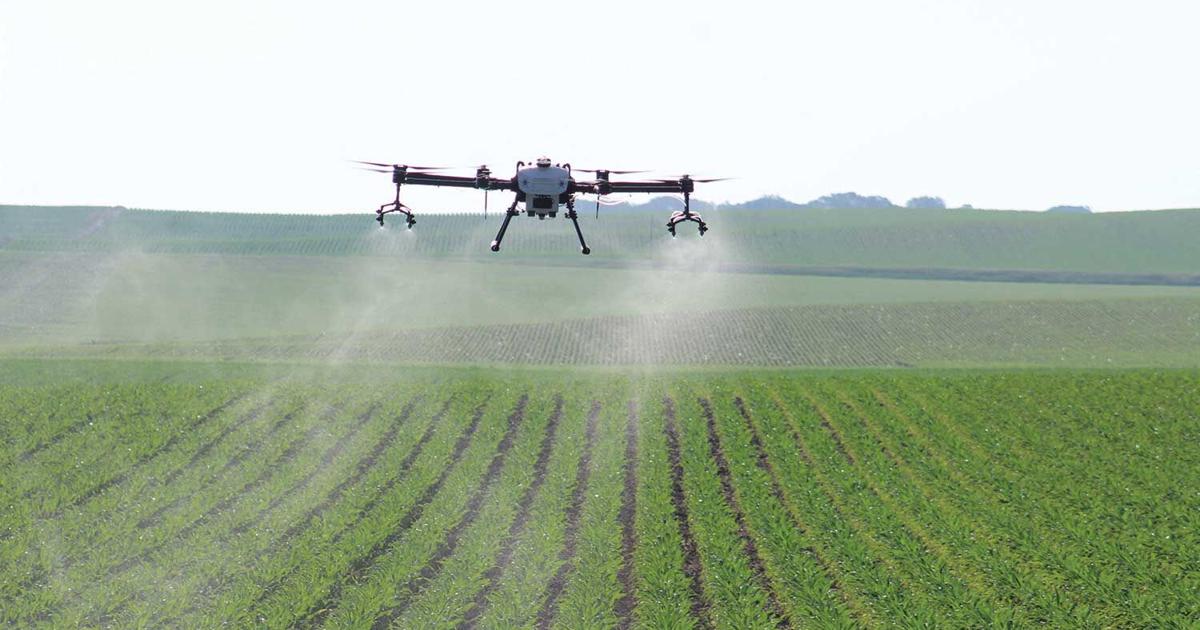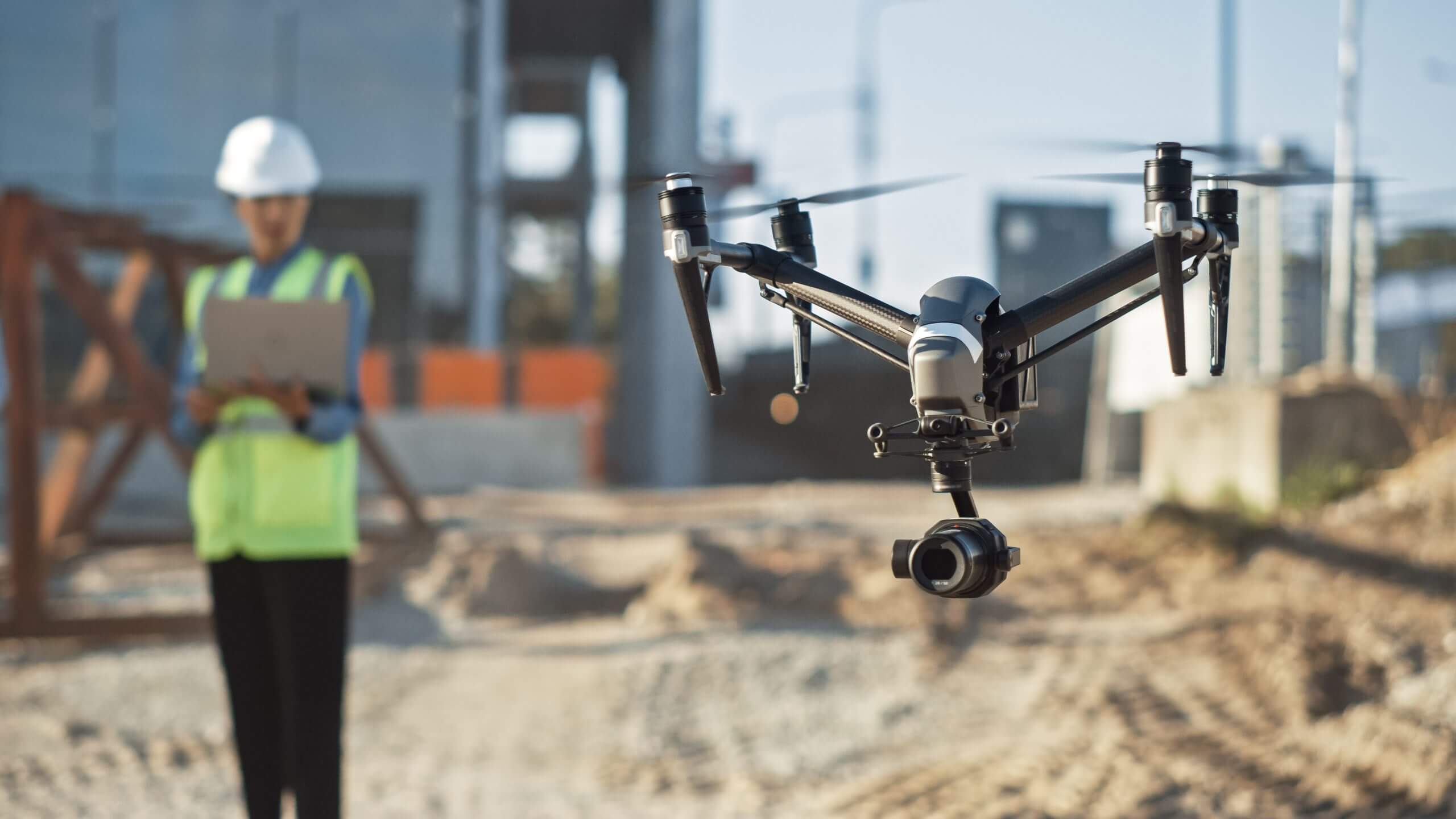Introduction
Welcome to the world of aerial exploration! Drones have revolutionized the way we capture breathtaking photographs and videos from above, making it accessible to everyone. However, purchasing a drone can be a hefty investment, especially if you’re not sure how often you’ll use it. That’s where drone rentals come into play.
Drone rentals offer a cost-effective and convenient way to enjoy the experience of flying a drone without the commitment of ownership. Whether you’re a professional photographer, an adventure enthusiast, or simply looking to try something new, renting a drone can provide you with endless possibilities and stunning imagery.
In this guide, we’ll take you through the step-by-step process of renting a drone. From researching reputable rental companies to understanding the rental application and returning process, we’ll equip you with all the information you need to ensure a smooth and successful rental experience. So, let’s dive in and discover how you can take your aerial adventures to new heights!
Researching and Choosing the Right Drone Rental Company
When it comes to renting a drone, it’s essential to choose a reliable and reputable rental company. Doing thorough research will help you find a company that not only offers high-quality drones but also provides excellent customer service. Here are a few factors to consider when researching drone rental companies:
- Reputation and Reviews: Start by reading online reviews and checking the reputation of the rental companies you come across. Look for feedback regarding the quality of their drones, reliability, and customer support. Positive reviews from previous customers are a good indicator of a trustworthy company.
- Drone Selection: Different rental companies may offer a variety of drone models and types. Consider your specific needs and the type of drone you’re interested in. Whether you’re looking for a compact drone for traveling or a powerful one for professional photography, choose a rental company that offers a diverse selection of drones.
- Policies and Agreements: Carefully review the rental policies and agreements of each company. Pay attention to details such as rental duration, fees, refund policies, and any additional requirements or restrictions. Ensure that their terms align with your needs before proceeding with the rental.
- Insurance Coverage: Accidents can happen, even with the most experienced drone operators. It’s prudent to choose a rental company that provides insurance coverage for any potential damages or accidents that may occur during the rental period. Confirm whether the insurance is included in the rental price or if you need to purchase additional coverage.
- Customer Support: It’s crucial to have access to reliable customer support, especially if you encounter any issues before, during, or after the rental. Look for rental companies that offer responsive and helpful customer service via phone, email, or live chat. Prompt assistance can make a significant difference in resolving any concerns that may arise.
By thoroughly researching and considering these factors, you can narrow down your options and choose a drone rental company that best aligns with your requirements. Once you’ve identified a few promising candidates, you’re ready to move forward with the rental process and get one step closer to embracing the thrilling world of drone flight.
Understanding the Rental Process
Before diving into the exciting world of drone flying, it’s important to understand the rental process. Familiarizing yourself with the steps involved will ensure a seamless and hassle-free experience. Here’s a breakdown of the typical drone rental process:
- Reservation: Start by making a reservation with your chosen drone rental company. Most companies allow you to reserve a drone online or through their customer service representatives. Select the rental period and provide any necessary information they may require, such as your identification, contact details, and payment method.
- Documentation: Depending on the rental company’s policies, you may need to complete some documentation. This can include a rental agreement, liability waivers, and insurance forms. Read through the documents carefully and ensure you understand your responsibilities and obligations. If you have any questions, don’t hesitate to reach out to the rental company for clarification.
- Payment: Pay the rental fees and any additional charges required by the rental company. Payment methods vary among companies and may include credit cards, PayPal, or other digital payment platforms. Some rental companies may also require a security deposit, which will be refunded upon returning the drone undamaged.
- Pick-up/Delivery: Next, you’ll either pick up the drone from the designated location or have it delivered to your doorstep. Ensure that you’re available to receive the drone during the agreed-upon time slot. Take note of any accessories or additional equipment included in the rental, such as spare batteries, remote controllers, or propellers.
- Orientation and Instructions: Once you have the drone in your hands, the rental company will provide you with an orientation session. They will explain the drone’s features, controls, and safety precautions. Pay close attention to these instructions, especially if you’re new to drone flying or using a specific model for the first time.
- Flying Courtesy and Regulations: Before taking off with the drone, familiarize yourself with the local rules and regulations for drone operation in your area. It’s vital to respect privacy, fly within designated areas, and obey any altitude or flight restrictions. Familiarize yourself with the drone’s capabilities and limitations to ensure safe and responsible flying.
- Flight Logs and Feedback: Some rental companies may require you to keep a flight log, noting important details such as flight duration, locations, and any issues encountered. Providing feedback after your rental experience can be valuable for both the rental company and future customers, helping improve their services and drone selection.
- Return: At the end of your rental period, return the drone and all accompanying accessories to the rental company on the agreed-upon date and time. Ensure that the drone is in the same condition as when you received it, with no damages or missing parts. The rental company will inspect the drone and process any necessary refunds or deductions based on their evaluation.
Understanding the rental process will empower you to navigate each step with confidence and maximize your enjoyment of the rental experience. Now that you’re familiar with the process, let’s move on to the next step: checking rental policies and prices.
Checking Rental Policies and Prices
Before finalizing your drone rental, it’s crucial to thoroughly review the rental policies and prices offered by the rental company. Understanding these details will help you make an informed decision and avoid any surprises or misunderstandings. Here are some key factors to consider when checking rental policies and prices:
- Rental Duration: Determine the rental period that best suits your needs. Rental companies typically offer hourly, daily, weekly, or even monthly rental options. Consider how long you’ll need the drone to ensure you select the most cost-effective and practical rental duration.
- Fees: Take note of any additional fees associated with the rental. This could include delivery/pick-up fees, insurance charges, cleaning fees, or late return penalties. Be aware of these costs upfront to avoid unexpected expenses.
- Discounts and Packages: Some rental companies offer discounted rates for longer rental periods or bundle packages for specific needs, such as aerial photography or videography. Explore these options to see if they align with your requirements and budget.
- Insurance Coverage: Verify the rental company’s insurance coverage policies. Determine whether insurance is included in the rental price or if you need to purchase additional coverage. Having insurance can provide peace of mind in case of any accidental damages or loss during the rental period.
- Late or Early Returns: Understand the rental company’s policy regarding late or early returns. They may charge additional fees for returning the drone after the agreed-upon rental period or offer prorated discounts for early returns. Clarify these details to avoid unnecessary penalties.
- Refund and Cancellation Policies: Familiarize yourself with the rental company’s refund and cancellation policies. Life can be unpredictable, and plans may change. Knowing the terms for cancelling or modifying your reservation will help you make informed decisions without incurring unnecessary costs.
- Condition of the Drone: Take note of the expected condition of the drone upon return. Most rental companies require the drone to be returned in the same condition it was rented. Familiarize yourself with any standard wear and tear allowances and potential fees for damages or missing parts.
- Availability: Confirm the availability of the drone you’re interested in renting during your desired rental period. Some popular models may have limited availability, especially during peak times. It’s advisable to make your reservation well in advance to secure your preferred drone.
By thoroughly reviewing the rental policies and prices, you’ll be able to make an informed decision and select the rental company that best fits your needs. Once you’ve finalized these details, you can move on to the exciting task of selecting the ideal drone to suit your specific requirements.
Selecting the Ideal Drone for Your Needs
Choosing the right drone is crucial to ensure an optimal rental experience. With a wide range of drone models available, it’s important to consider your specific needs and preferences before making a decision. Here are some factors to keep in mind when selecting the ideal drone for your rental:
- Purpose: Determine the primary purpose of your drone rental. Are you planning to capture stunning aerial photographs, shoot videos, or simply enjoy the experience of flying? Different drones are designed for specific purposes, so understanding your objectives will help narrow down your options.
- Camera Specifications: If photography or filmmaking is your main focus, evaluate the camera specifications of the drones you’re considering. Look for features such as resolution, image stabilization, and the ability to shoot in RAW format. Choose a drone with a camera that aligns with your desired level of image quality.
- Flight Performance: Assess the flight performance of the drones you’re interested in. Consider factors such as flight time (battery life), maximum flight range, and stability in various weather conditions. A longer flight time and a wider range can give you more flexibility during your rental period.
- Size and Portability: Think about the portability of the drone, especially if you plan to travel with it. Compact and foldable drones are ideal for easy transportation, while larger drones may offer more advanced features and capabilities. Consider your priorities and find the right balance between size and performance.
- Additional Features: Explore the additional features and capabilities of the drones you’re considering. This could include autonomous flight modes, obstacle avoidance systems, or follow-me functionality. Evaluate which features are essential for your needs and ensure the rental drone offers them.
- User-Friendliness: Consider your level of experience with drone flying. If you’re a beginner, opt for a drone that is easy to fly and has intuitive controls. More advanced users may prefer drones with customizable settings and manual control options. Choose a drone that matches your skill level.
- Budget: Set a budget for your drone rental and find options within that range. Remember to consider additional costs such as insurance, accessories, and any fees associated with the rental company’s policies. Balancing your budget with the desired features will help you make a smart choice.
By carefully considering these factors, you’ll be able to select the ideal drone that suits your needs and preferences. Once you’ve chosen the perfect drone, it’s time to proceed with the rental application and secure your reservation. We’ll explore the rental application process in the next section.
Completing the Rental Application
Once you’ve identified the ideal drone for your needs, it’s time to complete the rental application process. The rental application allows the rental company to gather necessary information and ensure a smooth and efficient rental experience. Here are the steps involved in completing the rental application:
- Personal Information: Provide your personal details, such as your full name, contact information, and address. Ensure that the information you provide is accurate and up-to-date to avoid any communication or delivery issues.
- Identification Documents: Some rental companies may require you to submit identification documents as part of the application process. This can include a copy of your driver’s license or passport. Follow the instructions provided by the rental company and submit the required documents as requested.
- Rental Period: Specify the desired rental period, including the start date and end date of the rental. Ensure that the dates align with your planned usage and availability. Be mindful of any minimum rental duration requirements that the rental company may have.
- Payment Information: Provide the necessary payment information to finalize your reservation. This typically includes credit card details or other preferred payment methods accepted by the rental company. Ensure that your payment information is accurate and valid to avoid any delays or complications.
- Insurance Coverage: Indicate whether you require insurance coverage for the rental period. If the rental company offers insurance options, specify your preference and ensure that the coverage aligns with your needs. Review the terms and conditions of the insurance coverage to have a clear understanding of what is included.
- Policies and Agreements: Read and acknowledge the rental company’s policies and agreements. Ensure that you understand the terms and conditions, including any rental restrictions, cancellation policies, or liability waivers. By agreeing to the policies, you accept the rental company’s terms and obligations.
- Additional Requests: If you have any additional requests or special requirements, such as specific accessories or delivery/pick-up instructions, communicate them clearly in the rental application. The rental company will do their best to accommodate your requests, depending on availability and feasibility.
Completing the rental application accurately and thoroughly will help expedite the process and secure your reservation. Double-check all the information provided before submitting the application to ensure its accuracy. Once your application is submitted and approved, you’re one step closer to embarking on your drone rental adventure.
Taking Safety Precautions
Ensuring safety during your drone rental is paramount. Understanding and following safety precautions will not only protect yourself and others but also help you make the most out of your rental experience. Here are some essential safety measures to keep in mind:
- Read the User Manual: Before attempting to fly the drone, thoroughly read the user manual provided by the rental company. Familiarize yourself with the operation procedures, safety guidelines, and any specific instructions or limitations related to the drone model you’re renting.
- Location and Environment: Choose a suitable location for flying the drone. Look for open areas away from airports, crowded spaces, and electrical wires. Be aware of any local regulations or flight restrictions in the area, and ensure that weather conditions are optimal for a safe flight.
- Pre-flight Checklist: Perform a pre-flight checklist to ensure that the drone and its components are in proper working condition. Check the battery level, propellers, and remote controller. Verify that the GPS signal is strong and that the camera is functioning correctly.
- Flight Planning: Plan your flight route and avoid flying over people, vehicles, or private property without permission. Take note of any potential obstacles, such as trees, buildings, or power lines, and maintain a safe distance from them during the flight.
- Battery Management: Monitor the battery level of the drone throughout your flight. Avoid depleting the battery completely, as this can lead to an emergency landing. Consider bringing spare batteries if necessary and follow the manufacturer’s instructions for proper battery charging and storage.
- Maintain Visual Line of Sight: Always keep the drone within your visual line of sight during the flight. This will help you maintain control and avoid any potential collisions or hazards that may be out of the drone’s view. If using a first-person view (FPV) system, ensure that you have a spotter to assist you.
- Respect Privacy: Respect the privacy of others during your drone flight. Avoid recording or capturing footage of people without their consent. Be mindful of your surroundings and adhere to any local privacy laws or regulations that may be in place.
- Emergency Procedures: Familiarize yourself with the emergency procedures outlined in the user manual. In the event of a technical issue or loss of control, remain calm and follow the recommended steps to safely land the drone and prevent any further damage or accidents.
- Stay Updated on Regulations: Stay informed about the drone regulations in your area. Regulations pertaining to drone operation can vary from country to country, and even within different regions. Stay updated on any changes or restrictions that may affect your rental experience.
By following these safety precautions, you’ll ensure a responsible and secure flight experience while maximizing your enjoyment of the drone rental. Now that you’re equipped with the knowledge to fly safely, let’s move on to the next section: collecting the rental drone and accessories.
Collecting the Rental Drone and Accessories
Collecting the rental drone and its accompanying accessories is an exciting moment in your drone rental journey. Properly receiving and inspecting the drone and its accessories will ensure that you have everything you need for a successful flight. Here are the steps involved in collecting the rental drone and accessories:
- Communication: Coordinate with the rental company regarding the collection process. Confirm the designated location and time for picking up the drone. If the rental company offers delivery services, provide them with accurate address details to ensure a smooth and timely delivery.
- Identification: Prepare your identification documents as required by the rental company. Ensure you have your driver’s license or passport handy to present to the rental company representative if necessary. This will help verify your identity and ensure a smooth collection process.
- Inspection: Carefully inspect the rented drone and its accessories upon collection. Check for any visible damages, missing parts, or malfunctions. Ensure that the drone’s body, propellers, and camera are in proper working condition. Notify the rental company immediately if you notice any issues.
- Accessories: Verify that all the accessories included in the rental package are present. This may include items such as spare batteries, remote controllers, propellers, charging cables, and carrying cases. Confirm that these accessories are in good condition and functioning as expected.
- Demonstration: If provided by the rental company, take advantage of any demonstration or orientation session offered. This will help familiarize yourself with the specific features, controls, and safety guidelines of the rented drone. Ask any questions you may have to ensure a successful flight experience.
- Testing: Before heading out for your first flight, take a few moments to test the drone’s basic functionalities. Ensure that the drone responds to commands and that the camera captures clear images or videos. This quick test will give you more confidence and reassurance before taking the drone into the sky.
- Storage and Transportation: Once you’ve collected the drone and accessories, ensure that they are stored and transported securely. Use the provided carrying case or a suitable protective bag to safeguard the drone during transit. Avoid exposing the drone to extreme temperatures, humidity, or physical shocks.
- Documentation: Make a note of the collection date and time, as well as any identified damages or issues with the rental drone in the rental company’s documentation. Take photos if necessary to document the condition of the drone upon collection. This will serve as evidence in case of any disputes later on.
By meticulously collecting and inspecting the rental drone and accessories, you’ll set the stage for a smooth and enjoyable drone rental experience. Now that you’re ready to take flight, let’s proceed to the next section, which covers familiarizing yourself with the drone.
Familiarizing Yourself with the Drone
Before taking your rental drone to the skies, it’s essential to familiarize yourself with its features, controls, and operation. By taking the time to understand the drone’s capabilities and limitations, you’ll be able to maximize its potential and ensure safe and smooth flight experiences. Here are some important steps to help you become familiar with the drone:
- Read the User Manual: Start by thoroughly reading the user manual provided by the rental company. Pay close attention to the sections that explain the drone’s features, components, and operating instructions. Understanding the manufacturer’s recommendations will help you make the most of the drone’s capabilities.
- Review the Control Layout: Familiarize yourself with the layout and functions of the remote controller. Take note of the different buttons, switches, and joysticks, as well as their corresponding operations. Practice manipulating the controls to gain confidence and familiarity before your first flight.
- Flight Modes and Settings: Explore the various flight modes and settings available on the drone. This could include autonomous flight modes, such as Follow Me or Waypoints, as well as different speed settings or camera settings. Test and understand these modes to determine which ones best suit your needs and desired flight experiences.
- Practice with Simulators: If available, take advantage of drone simulators to practice flying virtually. Simulators provide a safe environment to hone your skills and gain confidence in controlling the drone. Familiarize yourself with different flight maneuvers and practice basic piloting techniques before taking to the air.
- Perform Calibration: Some drones require calibration before each flight. Follow the instructions in the user manual to calibrate the drone’s compass, gyroscope, and accelerometer, if necessary. Proper calibration improves the drone’s flight stability and enhances overall performance.
- Understanding Return-to-Home (RTH) Functionality: Learn about the Return-to-Home (RTH) feature on the drone. Make sure you understand how it works and when it is activated. This feature can be useful in case of lost connection or low battery, allowing the drone to autonomously return to its takeoff location.
- Perform Test Flights: Before venturing out for more ambitious flights, practice in an open area with plenty of space. Familiarize yourself with basic flight maneuvers, such as ascending, descending, hovering, and flying in different directions. Practice these maneuvers to build your confidence and ensure smooth control.
- Camera Functions and Settings: If your rental drone is equipped with a camera, explore its functionalities and settings. Understand how to capture photos or videos, adjust exposure, and utilize any auto or manual modes. Experiment with different camera settings to achieve your desired results.
- Learn Emergency Procedures: Review the emergency procedures outlined in the user manual. Familiarize yourself with troubleshooting steps and safety measures to follow in case of emergencies or unexpected situations. Knowing how to safely react to issues will help minimize the risk of accidents or damage to the drone.
By taking the time to familiarize yourself with the rental drone, you’ll gain confidence in its operation and be better prepared for your flights. Now that you’re acquainted with the drone, it’s important to understand any flight restrictions or rules that may apply to your rental. We’ll explore this topic in the next section.
Understanding Flight Restrictions and Rules
When operating a rented drone, it’s essential to be aware of and abide by flight restrictions and rules in order to ensure safety and comply with local regulations. Understanding these restrictions will help you plan your flights and avoid any potential legal issues. Here are some key factors to consider regarding flight restrictions and rules:
- Airspace Regulations: Familiarize yourself with the airspace regulations in your flying location. Some areas, such as airports, military bases, or national parks, may have strict restrictions or no-fly zones. Use resources like the FAA’s B4UFLY app (if applicable) to check restricted areas and any temporary flight restrictions.
- Altitude and Distance Limits: Different countries or regions may impose altitude and distance limits for drone flights. Understand and adhere to these limits to ensure safe and legal operations. Keep your drone within visual line of sight (VLOS) and avoid flying too close to people, vehicles, or buildings.
- Privacy and Consent: Respect the privacy and personal space of others when operating your drone. Avoid flying over private properties without permission, and be mindful of people’s expectations of privacy. If you plan to capture images or videos of individuals or private properties, obtain consent beforehand.
- Time of Operation: Be aware of any restrictions on the time of day or night when you can fly a drone. In certain areas, such as urban spaces or near residential areas, there may be limitations on flight times to minimize disturbances. Plan your flights accordingly and respect quiet hours if applicable.
- Drone Registration: Some countries require drone operators to register their drones, especially for drones above a certain weight threshold. Ensure that you comply with any registration requirements to avoid penalties or legal issues. Check with local aviation authorities or regulatory bodies for specific registration guidelines.
- Bystander Safety: When flying a drone, prioritize the safety of bystanders and others in the vicinity. Avoid flying over crowds or congested areas, and maintain a safe distance from people, vehicles, and wildlife. Monitor the drone closely and take immediate corrective action in case of any potential risks.
- Weather Conditions: Keep a close eye on weather conditions before and during your flights. Strong winds, rain, or other adverse weather conditions can impact the stability and control of the drone. Avoid flying in inclement weather to prevent accidents or damage to the drone.
- Commercial Use Restrictions: If you plan to use the rented drone for commercial purposes, be aware of specific regulations and requirements. Commercial drone operations typically involve additional licensing, certifications, or permits, depending on your location. Research and comply with these regulations to avoid any legal complications.
- Local Laws and Regulations: Research and understand any local or regional laws and regulations that apply to drone operations. Regulations can vary from country to country or even from city to city. Stay informed and ensure that you adhere to the specific rules and guidelines of your location.
By familiarizing yourself with flight restrictions and rules, you’ll demonstrate responsible drone operation and contribute to the safety of yourself and others. Once you have a solid understanding of these regulations, you can proceed with operating and enjoying your rental drone responsibly.
Properly Using and Operating the Drone
As you embark on your drone rental experience, it’s crucial to use and operate the drone responsibly and safely. Following proper guidelines and best practices will not only ensure an enjoyable flight but also contribute to the overall safety of yourself, others in the vicinity, and the drone itself. Here are some essential tips for properly using and operating the drone:
- Pre-flight Checks: Before each flight, perform a thorough pre-flight check of the drone. Inspect the drone’s components, propellers, and battery to ensure everything is in proper working condition. Double-check that the remote controller is fully charged, and all settings and controls are properly configured.
- Find an Open Area: Choose an open area with minimal obstructions for your drone flight. Avoid flying near trees, buildings, power lines, or crowded spaces. Flying in an open area will minimize the risk of collisions and allow you to have greater control over the drone’s movements.
- Respect the Drone’s Limitations: Understand the capabilities and limitations of the rented drone. Stay within the recommended flight range and observe any altitude limitations imposed by local regulations. Pushing the drone beyond its limits can result in loss of control or accidents.
- Start with Basic Maneuvers: Begin each flight by practicing basic flight maneuvers, such as taking off, landing, hovering, and flying in different directions. Gradually build your skills and confidence before attempting more complex maneuvers or techniques.
- Use Smooth and Controlled Movements: Avoid abrupt movements or jerky controls when piloting the drone. Use smooth and gradual inputs to maintain stability and achieve smooth footage. Practice delicate adjustments to obtain a more professional and polished flight experience.
- Maintain Visual Line of Sight: Always keep the drone within your visual line of sight during the flight. This will enable you to maintain control and awareness of the drone’s position, proximity to obstacles, and any potential hazards in the environment. If using an FPV system, ensure a spotter keeps an eye on the drone.
- Observe Weather Conditions: Monitor weather conditions before and during each flight. Avoid flying the drone in strong winds, rain, snow, or fog as these conditions can impact the stability and control of the drone. Optimal weather conditions contribute to a safer and more enjoyable flight experience.
- Practice Responsible Battery Management: Be mindful of the drone’s battery level during each flight. Plan your flights in such a way that you have sufficient battery life to return safely. Avoid completely draining the battery, as this may result in emergency landings or potential damage to the drone.
- Communicate with Nearby Individuals: If there are people in the vicinity of your flight area, communicate with them and ensure they are aware of your drone operation. Address any concerns they may have and assure them that you prioritize their safety and privacy.
- Record and Review Your Flights: Record your flights whenever possible to review your piloting techniques and identify areas for improvement. This allows you to refine your skills over time and capture memorable footage. Analyzing your flights can also help identify any issues or malfunctions that need attention.
- Be Prepared for Emergency Situations: Have a plan in place for emergency situations, such as loss of connection, low battery, or unexpected malfunctions. Stay calm and follow the drone’s emergency procedures as outlined in the user manual. Being prepared will help you handle any unforeseen circumstances effectively and avoid accidents.
By following these guidelines for proper drone usage and operation, you’ll ensure a safe, enjoyable, and rewarding flight experience. Adhering to these best practices will also enable you to capture amazing aerial footage and make the most of your rented drone. Now, let’s move on to the next section, which covers the process of returning the rental drone.
Returning the Rental Drone
As your drone rental period comes to an end, it’s important to ensure a smooth and efficient return process. Returning the rental drone in the proper condition and adhering to the rental company’s guidelines will help maintain a positive rental experience. Here’s a step-by-step guide on how to return the rental drone:
- Review Return Instructions: Familiarize yourself with the rental company’s return instructions and policies. Take note of any specific requirements or deadlines for returning the drone. This information is usually provided in the rental agreement or documentation you received when initially renting the drone.
- Clean the Drone: Before returning the drone, clean it to remove any dirt, dust, or debris that may have accumulated during your flights. Use a soft cloth or brush to gently remove any particles from the drone’s body, propellers, and camera. Ensure that the drone is in the same condition as when you received it.
- Return Accessories: Gather all the accessories that were included in the rental package. This may include spare batteries, remote controllers, charging cables, and other items. Ensure that all accessories are accounted for and return them in the same condition as when you received them.
- Protective Packaging: Place the drone and its accessories in the protective packaging or carrying case provided by the rental company. This will help ensure that the drone is protected during transportation and return to the rental company. Follow any specific packaging instructions outlined in the return guidelines.
- Inspect for Damages: Carefully inspect the drone for any damages before you return it. Check for any scratches, dents, or malfunctions that may have occurred during your rental period. If any damages are identified, notify the rental company as soon as possible and follow their instructions for resolving the issue.
- Return Location: Return the drone to the designated location specified by the rental company. This may be a physical store, a drop-off point, or a shipment via a courier service. Ensure that you return the drone within the specified return timeframe to avoid any late return fees or penalties.
- Complete Return Documentation: Upon returning the drone, complete any necessary return documentation provided by the rental company. This may include a return form, a checklist, or a feedback survey. Provide accurate and honest feedback about your rental experience to help the rental company improve their services.
- Confirm Return: Once the drone has been returned, confirm with the rental company that they have received it. Obtain a receipt or acknowledgment of the return to serve as proof that you have returned the drone in good condition. Keep this documentation in case of any disputes or issues that may arise later.
- Refunds and Deposits: If applicable, inquire about the refund process for any deposits or prepaid fees. Confirm the amount to be refunded and the timeline for receiving the refund. Ensure that your payment information is up-to-date with the rental company to facilitate a smooth refund transaction.
- Feedback and Recommendations: Finally, provide feedback and recommendations to the rental company based on your rental experience. Share any positive aspects of their service or suggestions for improvement. This will help the rental company enhance their offerings and provide better experiences to future customers.
By following these steps and adhering to the rental company’s return instructions, you’ll ensure a seamless return process and maintain a positive relationship with the rental company. Take care to return the drone in the same condition you received it, and keep all relevant documentation for your records. With the return completed, you can reflect on your rental experience and cherish the memories captured during your drone flights.
Assessing and Addressing Any Damages
After returning the rental drone, the rental company will assess its condition to ensure there are no damages beyond normal wear and tear. It’s important to proactively address any damages that may have occurred during your rental period to ensure a smooth resolution. Here’s a guide on how to assess and address any damages:
- Rental Company Inspection: The rental company will conduct a thorough inspection of the returned drone. They will examine the drone’s body, propellers, camera, and any accessories for any damages or malfunctions. This inspection is usually done by the rental company’s technician or staff.
- Review the Inspection Report: Once the inspection is completed, the rental company will provide you with an inspection report detailing any damages found. Review the report carefully to understand the nature and extent of the damages noted by the rental company.
- Compare with Initial Condition: Compare the inspection report with the condition of the drone when you initially received it. If you believe that the damages mentioned in the report were pre-existing or exaggerated, provide evidence, such as photos or videos taken before the rental period, to support your claim.
- Communication with the Rental Company: Reach out to the rental company to discuss any discrepancies or concerns regarding the inspection report. Maintain clear and open communication to resolve any misunderstandings or potential disputes. Provide your perspective and evidence to support your case.
- Liability and Insurance Coverage: Determine the liability and insurance coverage for the damages. If you declined insurance coverage or if the damages are not covered by the insurance policy, clarify with the rental company how the damages will be addressed financially. Be prepared to cover the costs if the damages are deemed your responsibility.
- Negotiate a Resolution: If you and the rental company agree that the damages occurred during your rental period, negotiate a resolution. This may include financial compensation, repair services, or replacement of damaged parts. Consider the extent of the damages and work with the rental company to find a fair and satisfactory resolution.
- Documentation and Payment: Document all agreements and resolutions reached with the rental company regarding the damages. Ensure that all the terms, costs, and responsibilities are clearly stated in writing. If necessary, make the payment for the agreed-upon resolution promptly to facilitate a smooth resolution process.
- Learn from the Experience: Use the experience of addressing and resolving any damages as a learning opportunity. Reflect on what could have been done differently to prevent or minimize damages in the future. Incorporate this knowledge into your future drone rentals to ensure responsible and careful operation.
- Provide Feedback: After the resolution has been reached, provide constructive feedback to the rental company regarding their process and procedures. This helps them improve their services and ensures a better experience for future customers.
By proactively assessing and addressing any damages, you ensure a fair resolution for any issues that may have occurred during your drone rental. Communicate openly with the rental company and work towards a satisfactory resolution. Use the experience to enhance your future drone rentals and maintain a positive relationship with rental companies for future endeavors.
Conclusion
Congratulations on completing this comprehensive guide to renting a drone! By now, you should have a solid understanding of the process involved in renting a drone, from researching and choosing the right rental company to familiarizing yourself with the drone and addressing any potential damages. Renting a drone offers a cost-effective and convenient way to experience the thrill of flying and capture stunning aerial photographs and videos.
Remember to always prioritize safety and adhere to local regulations and flight restrictions when operating a rented drone. Take the time to familiarize yourself with the specific features, controls, and limitations of the drone you’re renting. This will enable you to fly responsibly and make the most of your rental experience.
Throughout your rental process, maintain open communication with the rental company and provide feedback on your experience. Whether it’s positive or constructive, your feedback can help rental companies improve their services and enhance future experiences for both you and other customers.
Now that you’re equipped with the knowledge and understanding of renting a drone, it’s time to embark on your aerial adventures. Whether you’re capturing breathtaking landscapes, documenting special events, or exploring new perspectives, renting a drone opens up a world of possibilities. So, select the perfect rental company, choose the ideal drone for your needs, and prepare for an unforgettable journey in the sky!







